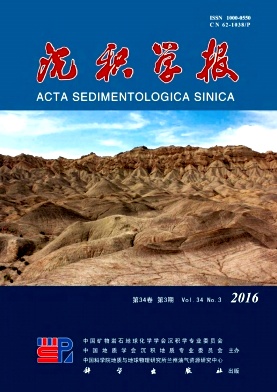Responses of Gravity Flow Deposits to Base-Level Variation in Rift Basin Using a case Study of Lower Teng1 Formation in South Wuliyasitai Sag
doi: 10.14027/j.cnki.cjxb.2016.03.006
- Received Date: 2015-07-07
- Rev Recd Date: 2015-10-08
- Publish Date: 2016-06-10
-
Key words:
- base-level variation /
- gravity flow deposition /
- gravity flow transformation /
- southern Wuliyasitai sag
Abstract: In gravity depositional area although the sediment grain-size cycle cannot reflect the base-level changes, the flow condition characteristic and types of gravity flow have an apparent response to the landform. Based on this response, our study discusses how to investigate the base level variation in gravity depositional area. A difference in activity rate of the synsedimentary faults that made slope breaks of Teng 1 Formation, southern Wuliyast sag, is shown within different medium cycles through relative paleogeomorphic restoring and analysis of strata thickness. Because of the difference, the landform of the study area underwent a flat to steep process with the accommodation rate changing from slow to fast. Within the process, the flow condition characteristic and deposition location of gravity flow show a regular changes through core observation and 3-D seismic inversion: turbidity current developed and deposited on the bottom part of slope break, as well as weak cohesive debris, during the activity rate of the synsedimentary faults was fast, which led to a steep landform and high creation rate of accommodation; while in the case of low activity rate resulting in flat landform and low creation rate of accommodation, debris developed and deposited wildly on the flat slope. Consequently, our research suggests that the landform variation can be confirmed by the changes of flow regime and taypes of gravity deposition, then the scenario of base level variation can be investigated.
| Citation: | CHEN Liang, JI HanCheng, ZHANG Liang, LI Chen, SHI Cong, YU Bin. Responses of Gravity Flow Deposits to Base-Level Variation in Rift Basin Using a case Study of Lower Teng1 Formation in South Wuliyasitai Sag[J]. Acta Sedimentologica Sinica, 2016, 34(3): 487-496. doi: 10.14027/j.cnki.cjxb.2016.03.006 |






 DownLoad:
DownLoad: